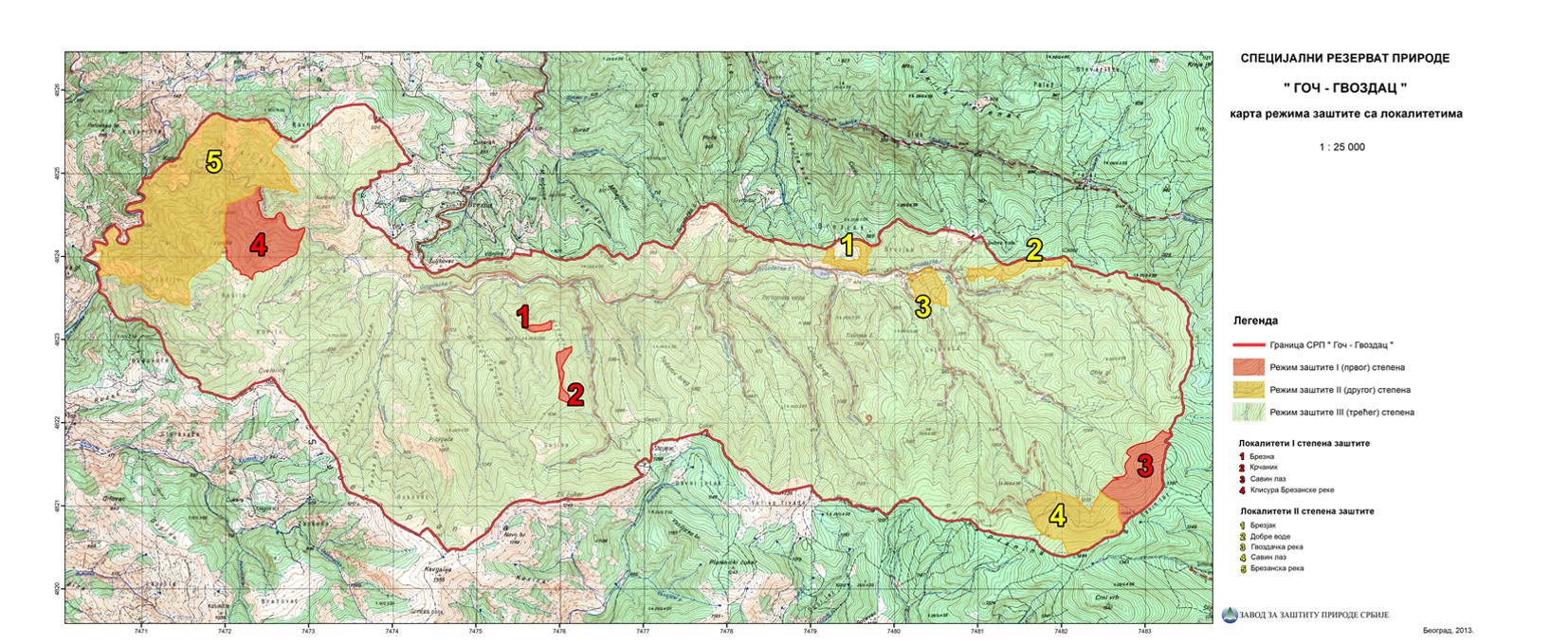The “Goč-Gvozdac” Special Nature Reserve
Based on the Decree of the Government of the Republic of Serbia no. 2981, in 2014, the Goč-Gvozdac forest complex was declared a Special Nature Reserve of category II. Within the “Goc-Gvozdac” SNR, zones can be singled out in which protection regimes of the first, second and third degree are implemented.
The protected natural asset covers almost the entire river basin of the Gvozdačka River, which is called the Brezanska River in the lower course. According to the valid forest division, Goč is divided into management unit A – the upper course of the river and the eastern part of the complex (former state forests) and management unit B – the lower course of the river (former communal forest).
The main watercourse of Goč is the Gvozdačka, i.e. Brezanska River, whose basin covers an area of 43.75 km² with over 110 recorded springs.
The most represented species of trees in the protected natural asset is beech, whose share in the total volume is 52.4%, while fir accounts for 39.7% and black pine for 5.8%. Although their share is insignificant, it is important to point out the presence of valuable broadleaves in these forests, including mountain elm, and mountain maple, whose tending, preservation and increase in the growing stock is one of the most important long-term tasks of forest management. The following species from the list of relict, endemic, rare and endangered species can be found on Mt.Goč: mountain maple (endemic species), Serbian spruce – introduced (relict and endemic species), periwinkle (relict species), black hornbeam (relict species), wild cherry, wild apple, aspen, birch, white ash (as rare and endangered species) and wild pear, mountain ash, mountain elm (as rare species). The listed species (i.e. their sites) are subjected to a special protection regime.
The forest is composed of 25 tree species, of which stand out an endemic of the Balkan Peninsula – mountain maple and a variety of black pine. In addition, a special rarity in the area of Goč is a preserved community of beech and fir forests. The special nature reserve is also inhabited by 129 bird species, of which 108 are nesting birds, 20 species of amphibians and reptiles and 27 species of mammals. Thanks to its natural features, marked richness in water and preserved remains of early mining from Roman times, this area is characterized by a touristic potential with a predominantly health-recreational character, in addition to its priority scientific-research function as a teaching basis for best-practices forest management. The area of the protected natural asset is 3,957 ha 17 a and 39 m2.


